I first got into programming as a hobby. Visual Basic 6 for Dummies taught me the basics, and I kept reading books to learn more. But the subject of algorithms was impenetrable for me. I remember savoring the table of contents of my first algorithms book, thinking Im finally going to understand these topics! But it was dense stuff, and I gave up after a few weeks. It wasnt until I had my first good algorithms professor that I realized how simple and elegant these ideas were.
A few years ago, I wrote my first illustrated blog post. Im a visual learner, and I really liked the illustrated style. Since then, Ive written a few illustrated posts on functional programming, Git, machine learning, and concurrency. By the way: I was a mediocre writer when I started out. Explaining technical concepts is hard. Coming up with good examples takes time, and explaining a difficult concept takes time. So its easiest to gloss over the hard stuff. I thought I was doing a pretty good job, until after one of my posts got popular, a coworker came up to me and said, I read your post and I still dont understand this. I still had a lot to learn about writing.
Somewhere in the middle of writing these blog posts, Manning reached out to me and asked if I wanted to write an illustrated book. Well, it turns out that Manning editors know a lot about explaining technical concepts, and they taught me how to teach. I wrote this book to scratch a particular itch: I wanted to write a book that explained hard technical topics well, and I wanted an easy-to-read algorithms book. My writing has come a long way since that first blog post, and I hope you find this book an easy and informative read.
Acknowledgments
Kudos to Manning for giving me the chance to write this book and letting me have a lot of creative freedom with it. Thanks to publisher Marjan Bace, Mike Stephens for getting me on board, Bert Bates for teaching me how to write, and Jennifer Stout for being an incredibly responsive and helpful editor. Thanks also to the people on Mannings production team: Kevin Sullivan, Mary Piergies, Tiffany Taylor, Leslie Haimes, and all the others behind the scenes. In addition, I want to thank the many people who read the manuscript and offered suggestions: Karen Bensdon, Rob Green, Michael Hamrah, Ozren Harlovic, Colin Hastie, Christopher Haupt, Chuck Henderson, Pawel Kozlowski, Amit Lamba, Jean-Franois Morin, Robert Morrison, Sankar Ramanathan, Sander Rossel, Doug Sparling, and Damien White.
Thanks to the people who helped me reach this point: the folks on the Flaskhit game board, for teaching me how to code; the many friends who helped by reviewing chapters, giving advice, and letting me try out different explanations, including Ben Vinegar, Karl Puzon, Alex Manning, Esther Chan, Anish Bhatt, Michael Glass, Nikrad Mahdi, Charles Lee, Jared Friedman, Hema Manickavasagam, Hari Raja, Murali Gudipati, Srinivas Varadan, and others; and Gerry Brady, for teaching me algorithms. Another big thank you to algorithms academics like CLRS, Knuth, and Strang. Im truly standing on the shoulders of giants.
Dad, Mom, Priyanka, and the rest of the family: thank you for your constant support. And a big thank you to my wife Maggie. There are many adventures ahead of us, and some of them dont involve staying inside on a Friday night rewriting paragraphs.
Finally, a big thank you to all the readers who took a chance on this book, and the readers who gave me feedback in the books forum. You really helped make this book better.
About this Book
This book is designed to be easy to follow. I avoid big leaps of thought. Any time a new concept is introduced, I explain it right away or tell you when Ill explain it. Core concepts are reinforced with exercises and multiple explanations so that you can check your assumptions and make sure youre following along.
I lead with examples. Instead of writing symbol soup, my goal is to make it easy for you to visualize these concepts. I also think we learn best by being able to recall something we already know, and examples make recall easier. So when youre trying to remember the difference between arrays and linked lists (explained in ), you can just think about getting seated for a movie. Also, at the risk of stating the obvious, Im a visual learner. This book is chock-full of images.
The contents of the book are carefully curated. Theres no need to write a book that covers every sorting algorithmthats why we have Wikipedia and Khan Academy. All the algorithms Ive included are practical. Ive found them useful in my job as a software engineer, and they provide a good foundation for more complex topics. Happy reading!
Roadmap
The first three chapters of this book lay the foundations:
- Youll learn your first practical algorithm: binary search. You also learn to analyze the speed of an algorithm using Big O notation. Big O notation is used throughout the book to analyze how slow or fast an algorithm is.
- ).
- ).
In my experience, Big O notation and recursion are challenging topics for beginners. So Ive slowed down and spent extra time on these sections.

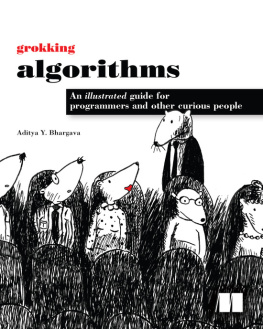
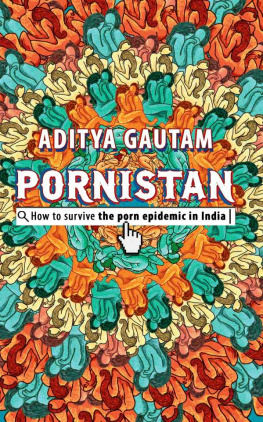
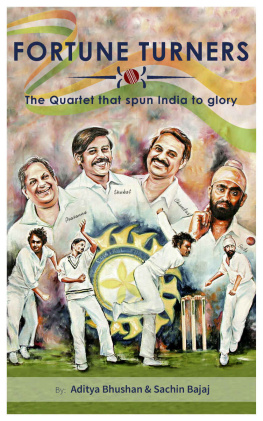
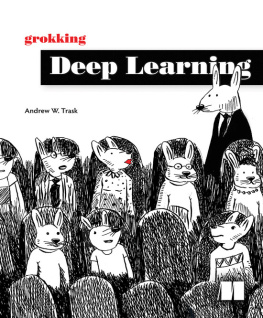
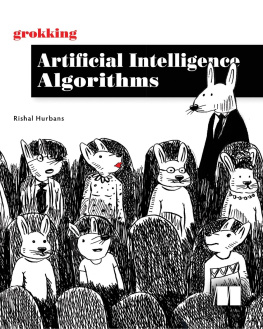

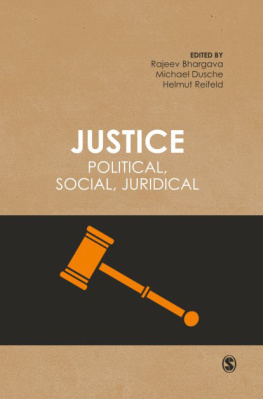
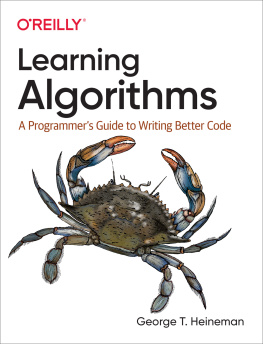
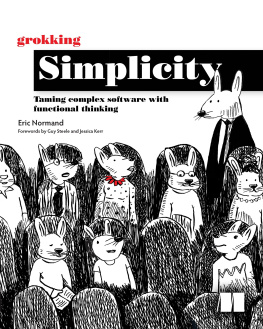

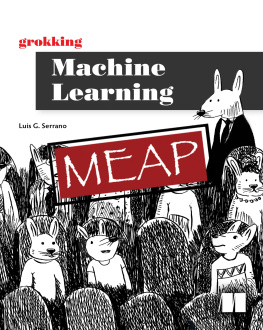
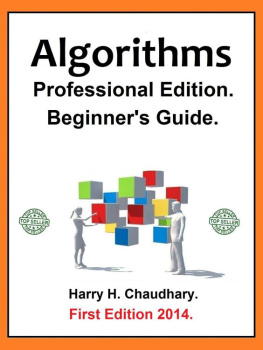
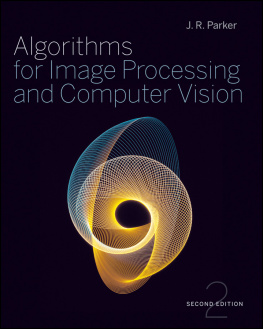

 Recognizing the importance of preserving what has been written, it is Mannings policy to have the books we publish printed on acid-free paper, and we exert our best efforts to that end. Recognizing also our responsibility to conserve the resources of our planet, Manning books are printed on paper that is at least 15 percent recycled and processed without the use of elemental chlorine.
Recognizing the importance of preserving what has been written, it is Mannings policy to have the books we publish printed on acid-free paper, and we exert our best efforts to that end. Recognizing also our responsibility to conserve the resources of our planet, Manning books are printed on paper that is at least 15 percent recycled and processed without the use of elemental chlorine.
